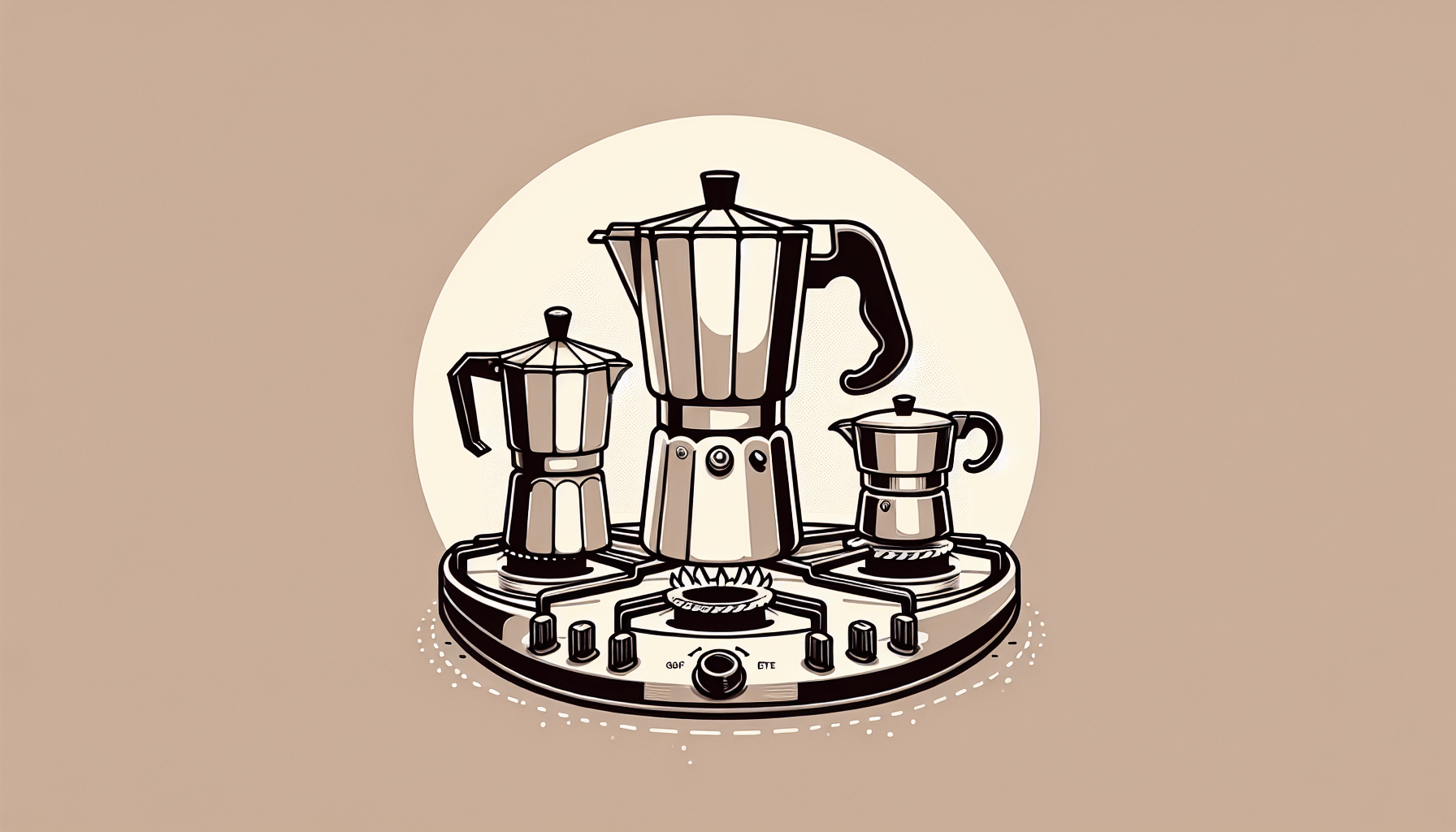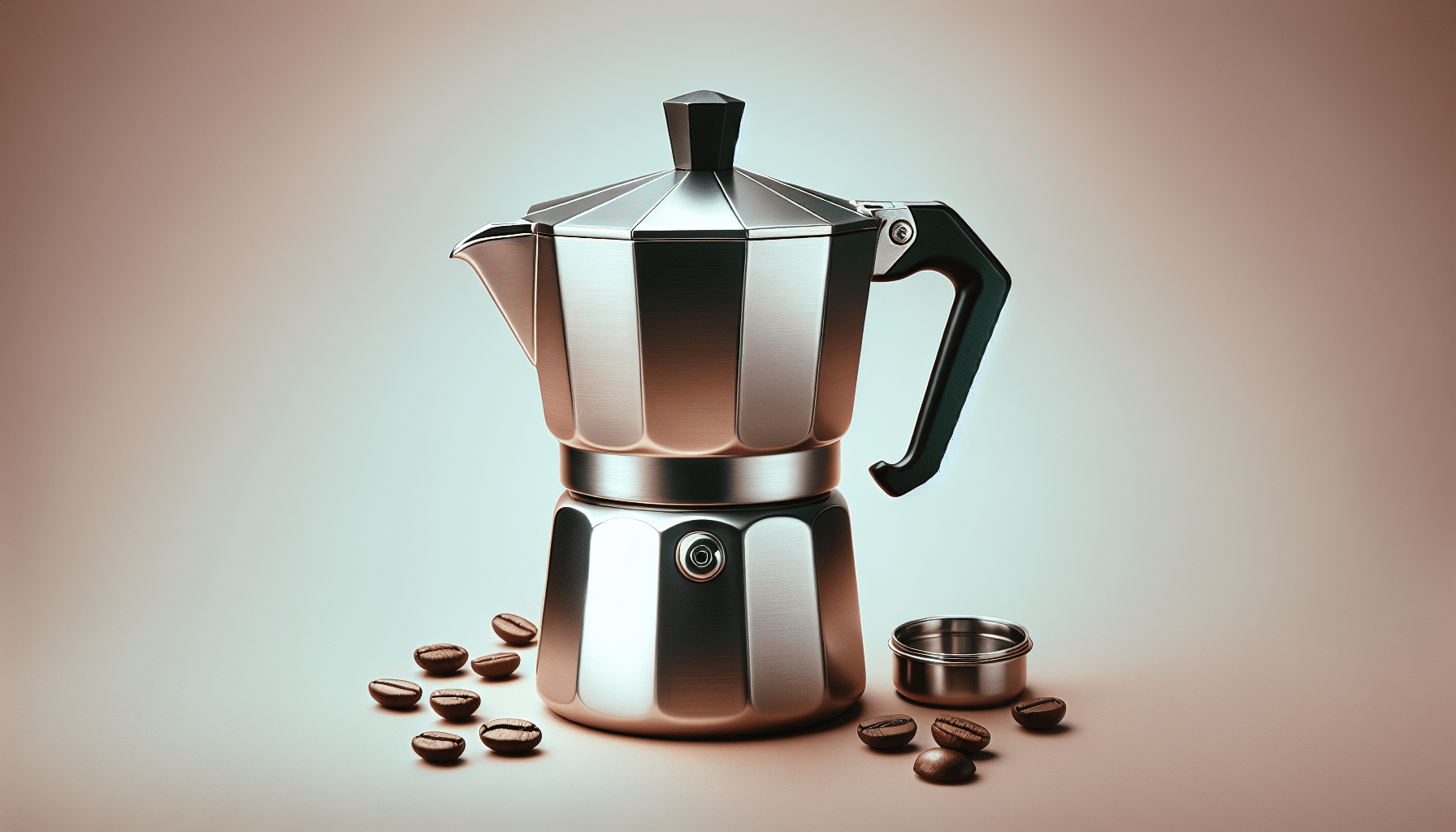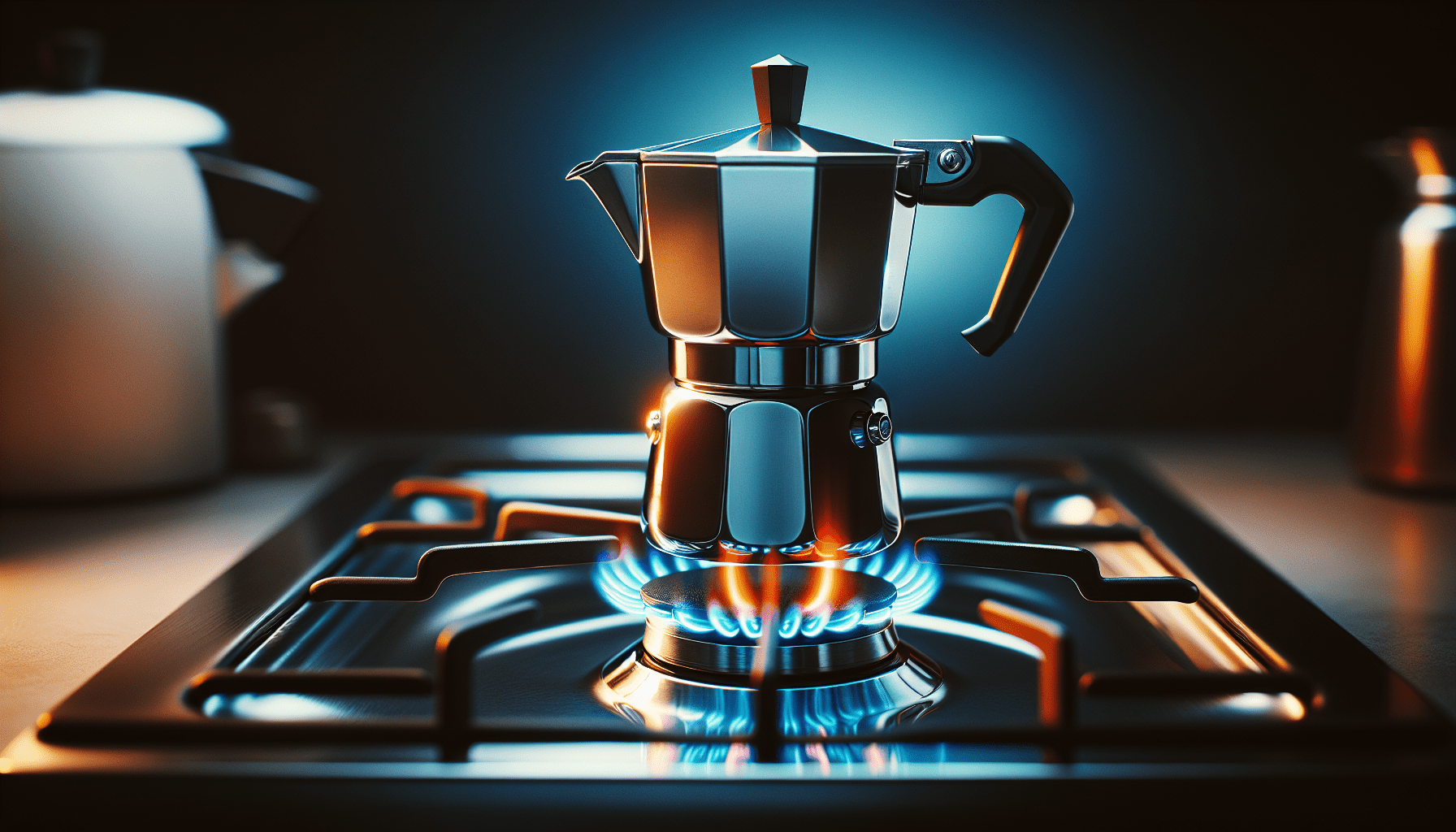If you’re a coffee lover looking to brew your own espresso at home, you may be wondering if a stovetop espresso maker is compatible with your stove. Well, good news! In this article, we’ll explore the versatility of stovetop espresso makers and how they can be used on any type of stove. With a friendly tone and a focus on your curiosity, we’ll provide all the information you need to start brewing your perfect cup of homemade espresso. So grab your favorite mug and let’s dive in!
Determining Compatibility
When it comes to using a stovetop espresso maker, determining compatibility with your stove is crucial. Not all stovetop espresso makers are designed to work with every type of stove, so it’s important to consider a few key factors before making a purchase.
Check the type of stove
The first step in determining compatibility is to check the type of stove you have. There are several different types of stoves, including gas, electric, induction, ceramic, solid fuel, and outdoor stoves. Each type has its own unique characteristics and requirements, so it’s important to understand how your chosen stovetop espresso maker will interact with your specific stove.
Consider the heat source
Another important factor to consider is the heat source of your stove. Gas stoves use an open flame, while electric stoves use a heating element, and induction stoves use magnetic fields to generate heat. Understanding the heat source of your stove will help you choose a stovetop espresso maker that can effectively harness and distribute the heat necessary for a perfect cup of espresso.
Ensure stability and balance
Lastly, ensure that the stovetop espresso maker is stable and balanced on your stove. Some stoves have uneven surfaces or may not provide a sufficient base for certain types of stovetop espresso makers. Ensuring stability and balance will not only prevent accidents but also allow for proper heat distribution during the brewing process.
Gas Stoves
Gas stoves are a popular choice for many households, and fortunately, most stovetop espresso makers are compatible with this type of stove. The adjustable flame control on gas stoves allows you to control the intensity of the heat, which is crucial for achieving the perfect brew. Whether you have a traditional gas stove or a modern gas cooktop, a stovetop espresso maker can easily be incorporated into your coffee routine.
Electric Stoves
Using a stovetop espresso maker on an electric stove is also possible, but compatibility may depend on the type of coil your electric stove has. Some stovetop espresso makers may not sit as securely on certain types of coils, which can affect the brewing process. Additionally, electric stoves may require proper heat distribution to ensure the espresso is brewed evenly. It’s recommended to choose a stovetop espresso maker with a flat and stable bottom to ensure it sits securely on the coil and to consider using a heat diffuser for more even heat distribution.
Induction Stoves
Induction stoves have become increasingly popular due to their efficiency and precise heat control. However, not all stovetop espresso makers are compatible with induction stoves. Induction stoves require specific materials, such as stainless steel or cast iron, to effectively generate heat through magnetic fields. Before purchasing a stovetop espresso maker for an induction stove, ensure that it is labeled as “induction-compatible” or specifically designed to work with induction stoves. Checking for induction-compatible markings will save you from disappointment and ensure a successful brewing experience.
Ceramic Stoves
Ceramic stoves have a unique surface that can vary in compatibility with stovetop espresso makers. Some ceramic stoves may not provide enough heat conductivity, resulting in a longer brewing time or weaker espresso. In such cases, it’s recommended to use a heat diffuser, which can help distribute the heat more evenly and provide a more consistent brewing process. It’s important to note that compatibility may vary with different ceramic stoves, so it’s best to check with the manufacturer or conduct thorough research before making a purchase.
Solid Fuel Stoves
Solid fuel stoves, such as wood-burning stoves or pellet stoves, have specific guidelines when it comes to using stovetop espresso makers. Since these stoves typically produce high levels of heat, it’s essential to check the manufacturer’s guidelines to ensure the safe use of a stovetop espresso maker. Proper ventilation is also crucial when using a stovetop espresso maker on a solid fuel stove to prevent any potential hazards. By following the manufacturer’s guidelines and ensuring adequate ventilation, you can enjoy a delicious cup of stovetop espresso while utilizing your solid fuel stove.
Outdoor Stoves
If you enjoy camping or outdoor adventures, you may be wondering if you can use a stovetop espresso maker on your outdoor stove. The good news is that most stovetop espresso makers are generally compatible with outdoor stoves. However, it’s important to consider portability and durability when choosing a stovetop espresso maker for outdoor use. Look for compact and lightweight options that can withstand outdoor conditions without compromising the quality of your espresso. With the right choice, you can have a flavorful cup of espresso and enjoy the great outdoors simultaneously.
Evaluating Safety Precautions
While using a stovetop espresso maker is a relatively simple process, it’s important to prioritize safety. Handling hot surfaces with care is crucial, as the stovetop espresso maker and the stove itself can become extremely hot during use. Always use oven mitts or heat-resistant gloves when touching or moving the stovetop espresso maker. Avoid overheating by closely monitoring the brewing process and adjusting the heat source accordingly. Additionally, ensure proper extraction methods by following the manufacturer’s instructions and using appropriate tools for removing the espresso maker from the stove.
Cleaning and Maintenance
To ensure the longevity and optimal performance of your stovetop espresso maker, proper cleaning and maintenance are essential. Follow the manufacturer’s instructions for cleaning and descaling your specific model regularly. This will help remove any coffee residue or mineral build-up and prevent any unwanted flavors in your espresso. It’s also important to inspect and replace parts as needed. Over time, seals and gaskets may deteriorate, which can impact the quality of your espresso. Regular maintenance will not only ensure a great tasting cup but also prolong the lifespan of your stovetop espresso maker.
Final Thoughts
When it comes to using a stovetop espresso maker on any type of stove, compatibility is of utmost importance. Consider the type of stove you have, the heat source, and the stability of the espresso maker before making a purchase. Gas stoves are generally compatible, while electric stoves may require specific coil types and heat distribution considerations. Induction stoves require materials labeled as “induction-compatible,” and ceramic stoves may need a heat diffuser for even heat distribution. Solid fuel stoves should be used according to manufacturer guidelines and outdoor stoves generally offer compatibility. Remember to handle hot surfaces with care, avoid overheating, and use proper extraction methods to ensure safety. Regular cleaning and maintenance will keep your stovetop espresso maker in excellent condition. With the right stovetop espresso maker and adherence to safety guidelines, you can enjoy a delicious cup of espresso right at home.




